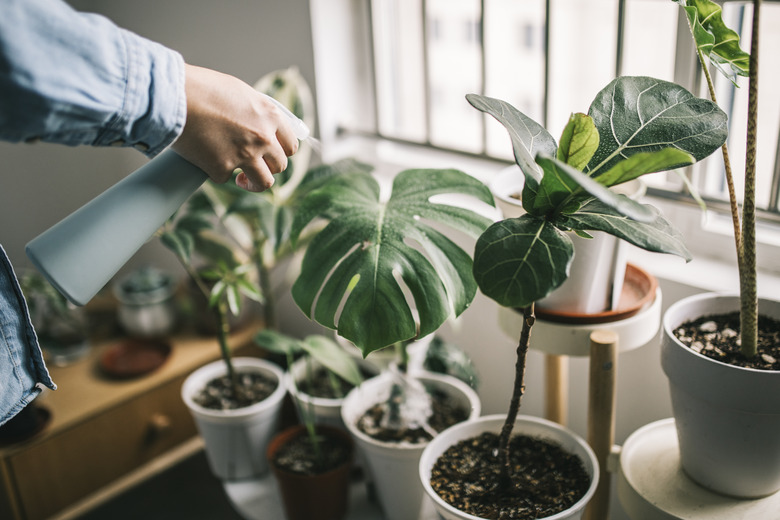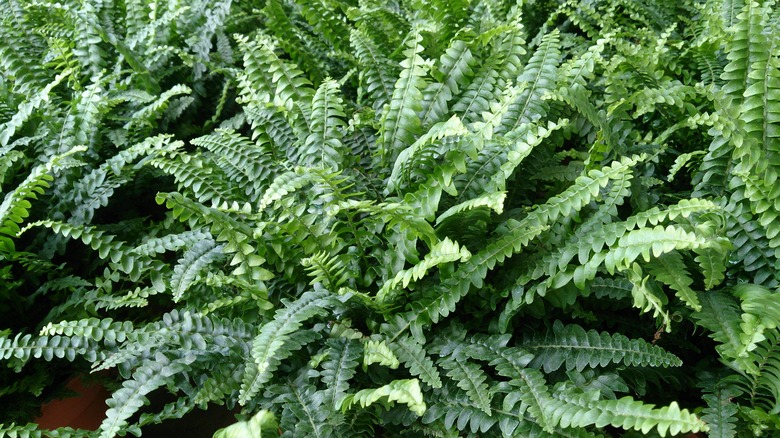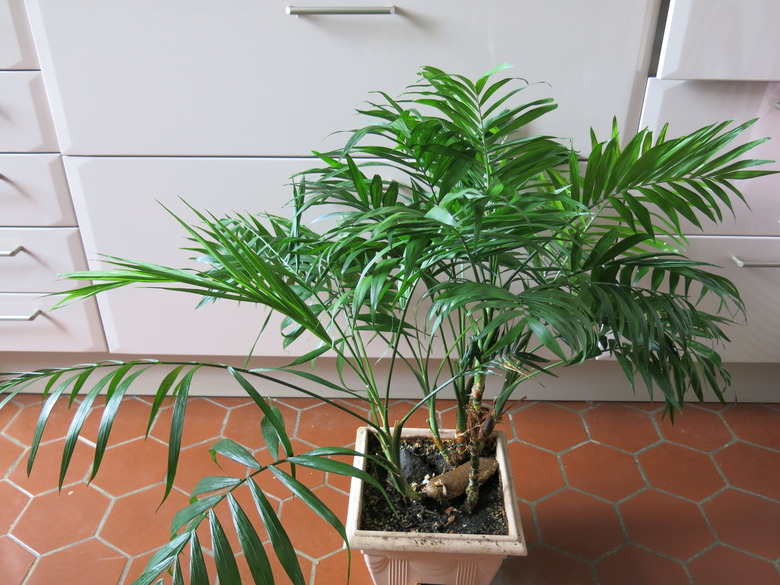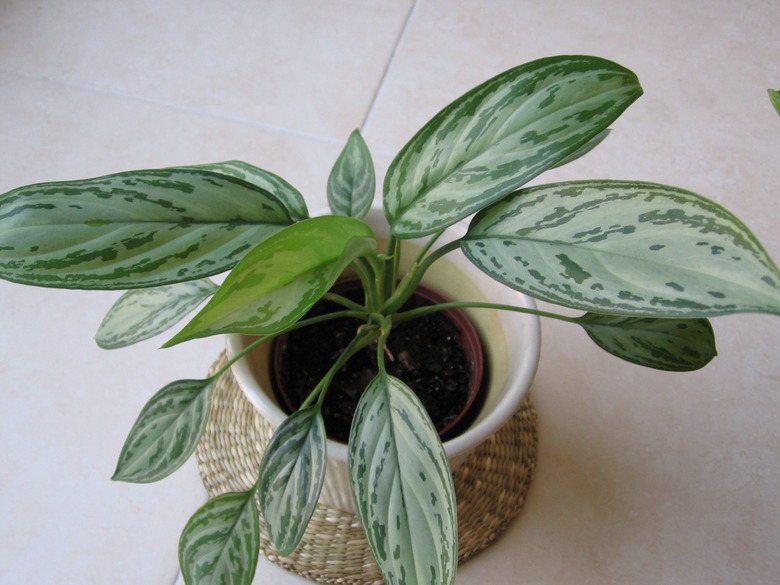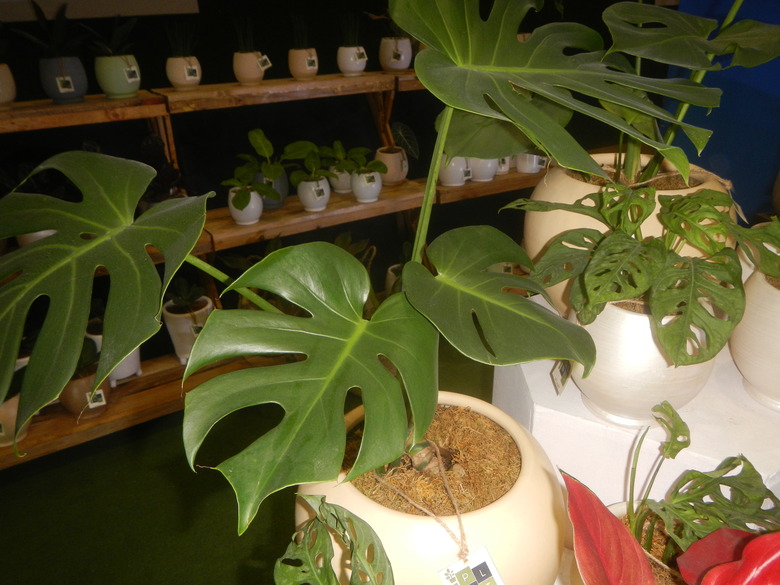How To Care For Indoor Foliage Plants
Whether kept in a hanging basket or displayed on a tabletop, indoor plants are a classic decor element that can enhance any space. Many indoor plants are selected for their attractive foliage. Though houseplant care will depend on the species, indoor foliage plants require proper light, watering and fertilization to look their best.
Popular Indoor Foliage Plants
Many types of plants are grown as indoor foliage plants. Let's look at a few common houseplants grown for their attractive leaves.
Ferns
Some species of ferns, which are nonflowering plants that reproduce via spores, are kept as houseplants. The Boston fern (Nephrolepis exaltata, zones 10 to 12) is a popular species.
Palms
A number of tropical palms are grown as houseplants, including the neanthe palm (Chamaedorea elegans, zones 10-12) and the areca palm (Dypsis lutescens, zones 10 to 11).
Aglaonema
Native to Asia, aglaonema (Aglaonema spp., zones 10 to 11), also called Chinese evergreen, is prized for its ornamental foliage, which may be variegated.
Vines
Popular indoor vines include the heart-shaped philodendron (Philodendron hederaceum, zones 11 to 12) and arrowhead vine (Syngonium podophyllum, zones 10 to 12). The Swiss cheese plant (Monstera deliciosa, zones 10 to 12), which gets its name from the holes in its leaves, is another vine commonly grown indoors.
Culture of Foliage Houseplants
The light, temperature and humidity needs of houseplants vary according to the species.
Light
The right light conditions are crucial for indoor plants. Plants that do not receive enough light may grow leggy, while plants placed in a window where they are exposed to full sun or direct sunlight may fade or scorch.
Houseplants are grouped into three categories: low light, medium light or high light. Philodendron vines and Chinese evergreen plants are examples of indoor foliage plants that do well in low light. Boston ferns are considered medium-light species.
Temperature
Indoor foliage plants should be kept at temperatures of 50°F or higher. **Temperatures between 65 and 75°F are preferable for most species.** Plants kept at colder temperatures may suffer from chill damage, which manifests as chlorosis, or yellow leaves, as well as leaf drop.
Sudden changes in temperature can also be detrimental to houseplants. Therefore, you should keep indoor plants away from air conditioning vents and radiators.
Humidity
Indoor plants, especially tropical houseplants, need humidity to thrive. **At least 50% humidity is necessary for indoor plants, though some need more than that.** The Chinese evergreen is considered a low-humidity plant, while the arrowhead vine is a high-humidity plant.
One way to keep the air humid enough is to place the plants on a tray of wet pebbles. You can also run a humidifier.
Indoor Foliage Plant Care Tips
Just like outdoor plants, indoor foliage plants need to be watered and fertilized to thrive. Potted plants also need to be repotted periodically.
Watering
Indoor plants need watering during the growing season. The amount of water an indoor foliage plant needs depends on the species, how much light it receives and the size of the container, among other factors.
As a general rule, potted plants should be watered when the first top inch of the soil dries out. Some plants should not ever be allowed to dry out, however.
Watering should be reduced in the winter. It is critical to avoid overwatering indoor plants, which can result in root rot.
Fertilizing
Indoor foliage plants benefit from fertilizer during the growing season. The right amount depends on the species. Pale foliage is an indication that a plant needs fertilizer.
A balanced formula containing equal parts nitrogen, potassium and phosphorus is used for most indoor plants. Too much fertilizer can be detrimental and cause leaf tips to appear burnt.
High-light plants need more fertilizer than low-light plants. The larger the container, the more fertilizer the plant will need.
Repotting
Repotting plants is an important part of indoor gardening. Container-grown plants need to be repotted periodically when their roots outgrow the container. How often the plant needs to be repotted depends on the growth rate of the species and the container size.
When repotting a plant that has become root-bound, choose a container that is an inch wider than the original.
Pests of Indoor Foliage Plants
Foliage houseplants can become infested with pests that feed on plant sap, including aphids, mealybugs, scale and spider mites.
These insects congregate on stems and the underside of leaves. Their feeding activity can cause yellow leaves on indoor plants that eventually wilt and drop. Infested plants should be isolated to prevent the pests from spreading.
Insecticidal soaps can keep indoor plant pests in check, though certain species are sensitive and may be damaged by these soaps. As an alternative, use a stream of water to dislodge them and remove the remaining individuals with a cotton swab dipped in rubbing alcohol.
References
- University of Georgia Extension: Growing Indoor Plants with Success
- University of Florida IFAS Extension: Caring for Houseplants
- University of Maryland Extension: Selecting Indoor Plants
- Clemson Cooperative Extension: Indoor Palms
- University of Missouri Extension: Lighting Indoor Houseplants
- Missouri Botanical Garden: Indoor Plants or Houseplants
- Missouri Botanical Garden: Mealybugs – Indoors
- Clemson Cooperative Extension: Philodendron
- University of Wisconsin-Madison Division of Extension – Boston Fern, Nephrolepis exaltata 'Bostoniensis'
- University of New Hampshire: Which Fertilizer is Best for Houseplants?
- University of Maryland Extension: Temperature and Humidity for Indoor Plants
- Missouri Botanical Garden: Aglaonema 'Red Gold'
